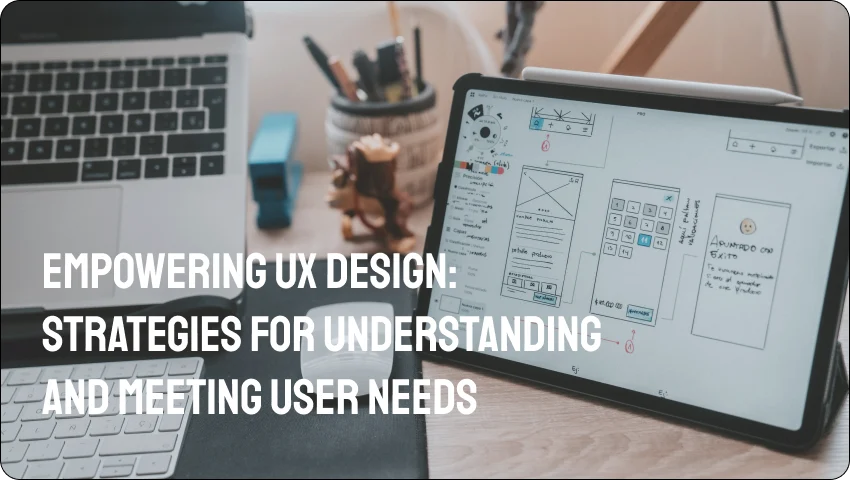
User Experience (UX) research forms the foundation for crafting products and interfaces that go beyond meeting user expectations to exceeding them. It revolves around comprehending user needs and preferences to engineer digital experiences that truly resonate. In this blog, we delve into the realm of UX research methods, illuminating how they empower designers and businesses to fashion solutions that are unequivocally centered on the user.
User experience is not a one-time project; it's an ongoing commitment to understanding and serving your audience's evolving needs.
UX research is more than data collection; it's an immersive journey into users' unique perspectives, challenges, and aspirations. It centers on placing users at the core of design, ensuring decisions align with their needs. It delves into why users act the way they do, enabling the creation of digital experiences that are not just functional but profoundly meaningful. UX research serves as a guiding compass in design, ensuring every step leads to solutions that authentically cater to users, enhancing satisfaction and loyalty.
UX research dives deep into understanding users' behaviours, preferences, and pain points. It's a vital process that informs the design and development of user-friendly products and experiences. By uncovering these insights, businesses can create digital solutions that resonate with their audience, resulting in enhanced user satisfaction and more successful outcomes.
UX design places users at its core, prioritizing their needs and expectations. This approach ensures that products are tailor-made to fulfill user requirements and exceed their expectations. By keeping the user central to the design process, businesses can create digital experiences that resonate, resulting in happier and more loyal users.
UX researchers employ diverse methods like surveys, interviews, observations, and usability testing to collect valuable data about user needs. This comprehensive approach allows for a holistic understanding of user behavior, preferences, and pain points. Surveys provide quantitative insights, interviews offer qualitative depth, observations provide real-world context, and usability testing uncovers usability issues. By utilizing this array of techniques, businesses can gain a well-rounded view of user requirements, enabling them to craft user-centered digital solutions that resonate and excel.
Developing user personas entails creating comprehensive profiles of typical users, encompassing demographics, goals, and pain points. These personas serve as powerful tools, guiding design decisions with a deep understanding of the target audience. By personifying users, designers can humanize their design process, making it easier to create interfaces that align with users' unique needs and preferences. User personas act as reliable reference points throughout the design journey, ensuring that every decision made resonates with the real-life users they represent.
UX research plays a crucial role in identifying pain points along the user journey—those areas where users encounter difficulties or frustrations. By pinpointing these challenges, businesses gain insights into critical opportunities for improvement. These pain points serve as signposts, guiding the refinement of digital experiences. Addressing these issues not only enhances user satisfaction but also contributes to the overall success of a product or service. UX research acts as a compass, ensuring that the design process focuses on creating solutions that alleviate user frustrations and improve overall usability.
Research findings are a continuous and invaluable resource in the design process, used iteratively to enhance prototypes and guarantee that the final product closely aligns with user needs. This iterative approach ensures that design decisions are informed by real user insights and that potential issues are addressed promptly. By incorporating research findings at various stages, designers can fine-tune their creations to better meet user expectations, resulting in a more user-friendly and successful end product. It's a dynamic, user-centered process that prioritizes continual improvement and alignment with user requirements.
UX research is a perpetual journey since user needs and behaviors can evolve. To uphold a user centered approach, it's vital to maintain a continuous cycle of research and feedback. Regularly revisiting and reevaluating user needs helps ensure that digital experiences remain relevant and effective. By staying attuned to changing user expectations, businesses can adapt and innovate,
keeping their products and services in harmony with evolving user requirements. UX research serves as the compass that navigates the ever-changing landscape of user needs, guiding design and development towards lasting success.
UX research serves as the guiding compass, leading you toward the ultimate destination of user satisfaction. Through a multifaceted approach that includes diverse research methods, the development of user personas, pinpointing pain points, and embracing iterative design, you can craft digital experiences that deeply resonate with your audience. For a successful UX research journey, consider partnering with Uniorbit, where our expertise ensures your path to user-centric excellence. Always remember, it's not merely about technology; it's fundamentally about understanding people and fulfilling their unique needs to create exceptional digital interactions.
At Uniorbit, we're passionate about UX research and design. We understand that your success hinges on understanding and meeting user needs. That's why our dedicated team specializes in UX research, ensuring that your digital experiences are nothing short of remarkable.
Your email address will not be published. Required fields are marked *
Comments